Canada: Calls grow to uncover more residential school mass graves
Indigenous leaders demand gov’t help to search for unmarked graves after the discovery of 215 Indigenous children’s remains.
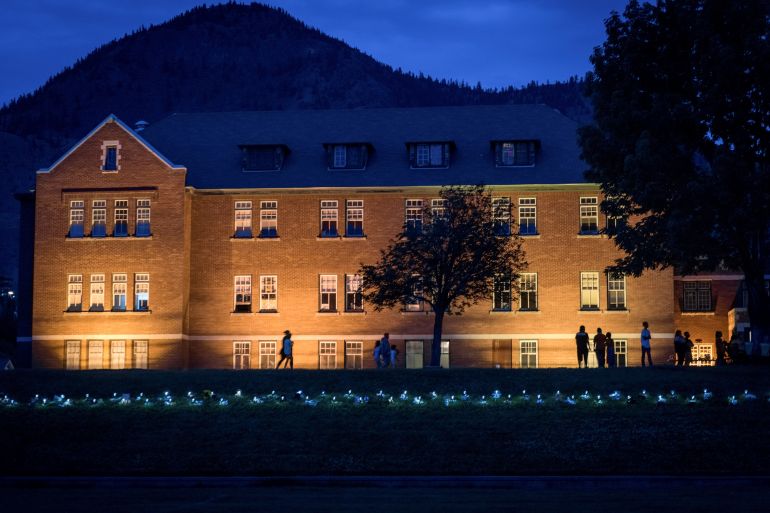
Montreal, Canada – As Indigenous people across Canada continue to grapple with the discovery of the remains of more than 200 children at the site of a former residential school, calls for justice and accountability are also growing.
A key demand over the past week from First Nations leaders has been for the Canadian government to adequately fund and help communities lead searches for unmarked graves in which more children are believed to be buried.
Keep reading
list of 3 itemsRemains of 215 Indigenous children found in Canada
Canada: ‘This one unmarked grave is what genocide looks like’
A federal Truth and Reconciliation Commission (TRC) tasked with investigating the residential school system, which operated for more than 100 years, had called for such action in 2015 – but Ottawa has yet to implement that recommendation.
“With the discovery of the 215 children in Kamloops, there are no excuses for not taking aggressive action to find all the lost ones at any such locations across Canada,” said Chief Mark Hill of Six Nations of the Grand River, the largest First Nation in Canada, in an open letter to Prime Minister Justin Trudeau on May 31.
For years, residential school survivors, their descendants, and Indigenous leaders have been demanding investigations into unmarked graves linked to Canada’s residential schools, which numbered more than 130 across the country.
Many accuse the government of acting too slowly – and doing far too little – to help alleviate the suffering of the families of several thousand Indigenous children who died at the schools. “There is a lot of work to be done. Documentation needs to be studied and preserved. The school cemeteries need to be protected and maintained. The dead must be honoured, and the survivors must be heard,” Hill said.
‘Ownership and accountability’
The remains of 215 Indigenous children, including some as young as three, were found on the grounds of Kamloops Indian Residential School in the western province of British Columbia, Tk’emlúps te Secwépemc First Nation Chief Rosanne Casimir announced on May 27.
The school, which was once the largest residential school in Canada with nearly 500 students enrolled, was open from 1890 to 1978. Operated by the Roman Catholic Church for most of that period, the government took control in 1969 until its closure.
Casimir said the 215 bodies were only a preliminary finding and work at the site would continue. She also acknowledged that other unmarked graves are believed to exist at or near former residential schools.
“As a community who is burdened with the legacy of a federally mandated Indian Residential School, Canada must face ownership and accountability to Tk’emlúps te Secwépemc as well as all communities and families,” her office said in a statement on May 31.
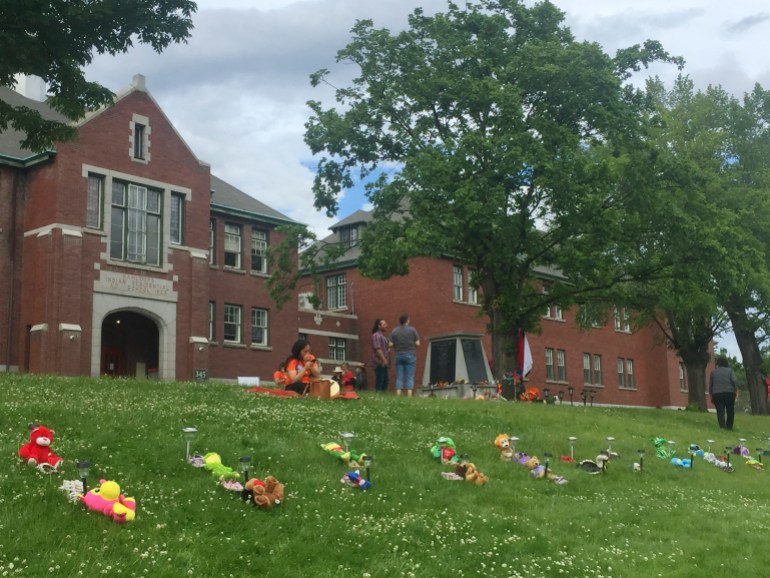
Residential schools aimed to forcibly assimilate Indigenous children into Canadian society, and the TRC concluded in 2015 that Ottawa had committed “cultural genocide” through the system. The schools were rife with abuse, and upwards of 4,000 Indigenous children are believed to have died there, most often due to disease. The commission said, “Many, if not most, are likely to be buried in unmarked and untended graves.”
Among 94 calls to action (CTAs) issued six years ago, the TRC called on Canada to work with churches, Indigenous communities, and residential school survivors to map cemeteries at the schools. “A national programme, carried out in close consultation with the concerned Aboriginal communities, is required to complete the task of identifying the many unmarked residential school cemeteries and gravesites across Canada,” it said.
Crown-Indigenous Relations and Northern Affairs Canada told Al Jazeera in an email this week that the country’s 2019 budget provided 33.8 million Canadian dollars ($28m) over three years to support the CTAs on deaths at the schools. In 16 virtual engagement sessions, the government heard from survivors and other Indigenous stakeholders “on how to move forward on implementing this work”, the department said.
But Canada has completed only eight of the 94 CTAs to date, according to an analysis by the First Nations-led Yellowhead Institute research centre. And while the schools have closed, Indigenous people say the policies underpinning the system have not changed much, as First Nations, Métis and Inuit children are still separated from their families in disproportionate numbers.
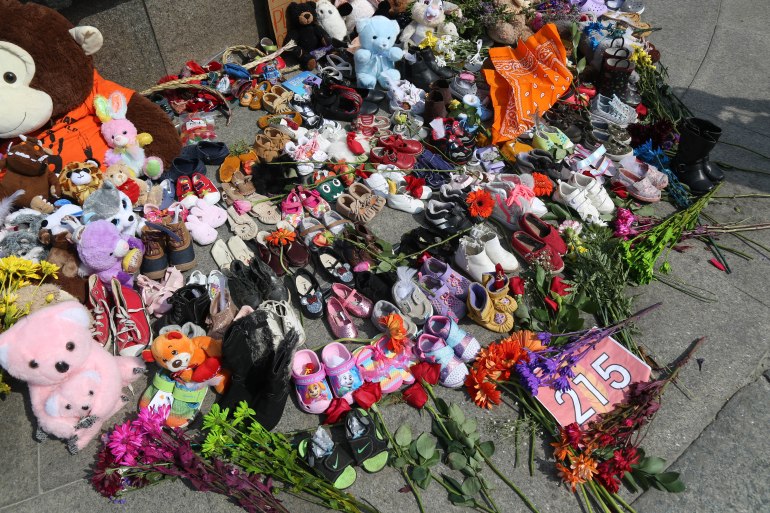
“Canada has not done what it should have done,” said Kathleen Mahoney, a law professor at the University of Calgary who specialises in reparations for mass rights abuses. “There should have been action taken immediately [after the TRC CTAs] to find these graves, to identify the children and return the remains to the families if that’s what they wanted and to work with First Nations,” Mahoney told Al Jazeera.
“They failed them in life, and they failed them in death.”
More sites
Scott Hamilton, a professor in the anthropology department at the Lakehead University in Ontario and author of a report for the TRC, called “Where are the Children buried?”, said the number of unmarked burial sites linked to residential schools in Canada is a “tragic, unknown question”.
“I think pretty much every school in the country up until the very recent past … we should expect that there were deaths that occurred there. Now the unknown question of course is where those children may have been buried,” Hamilton told Al Jazeera.
He said quite frequently, especially at older residential schools, a cemetery would have been established on school grounds. In other cases, children were buried in churchyard cemeteries belonging to the churches that ran the schools. Children may also have been buried in municipal cemeteries, or if children were sick and died in hospital, they could be buried elsewhere.
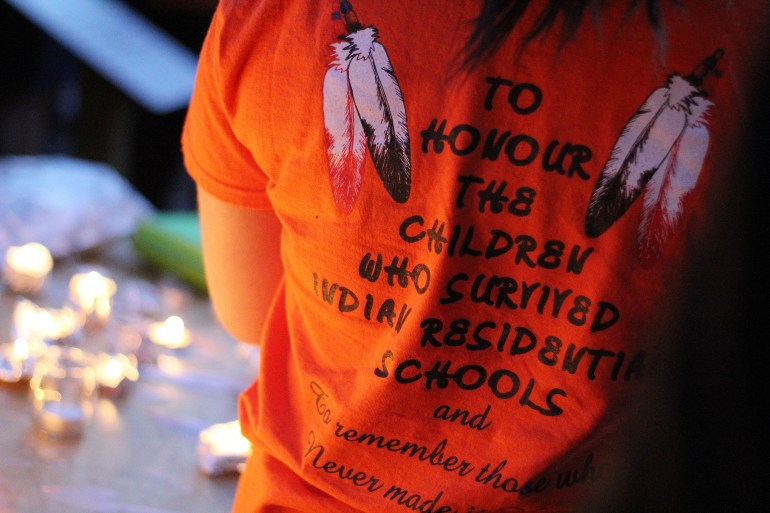
Hamilton added that the burial grounds also may be under various jurisdictions today. “Some have been redeveloped for different purposes, others are lying abandoned and forgotten. It’s a question of how do we coordinate the discussion that needs to come, to figure out that path forward?” he said.
Whatever happens next, Murray Sinclair, a former Canadian senator and chairman of the TRC, said it is clear that more unmarked graves will be found. “We know that there were probably lots of sites similar to Kamloops that are going to come to light in the future, and we need to begin to prepare ourselves for that,” he said in a video statement on June 1.
Sinclair said the commission had asked the federal government to allow it to expand its mandate to investigate deaths at the schools and to fund that work, but their request was denied. Canada’s Minister of Crown-Indigenous Relations Carolyn Bennett also confirmed this week that a request for funding to search for unmarked burial sites was denied in 2009.
“Since the revelation of what was discovered at Kamloops has come to light, I have been inundated with phone calls from survivors – by the dozens, if not hundreds now, they’ve called me – often just to cry, just to tell us, ‘I told you so. I told you that this had happened,'” Sinclair said.
Angela White, executive director of the Indian Residential School Survivors Society, which provides support for survivors in British Columbia, told Al Jazeera that many survivors have requested culturally safe and appropriate healing opportunities, along with one-on-one support with Indigenous counsellors.
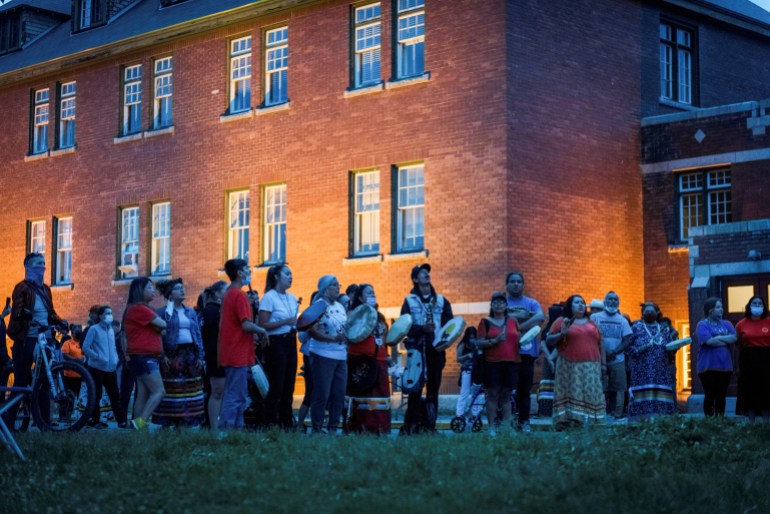
The initial feeling for many Indigenous people when the Kamloops unmarked grave was found “was extreme anger because they knew that this was a reality”, White said, “but then that later goes away to grief, sorrow and loss”.
“Finding these remains is showing that their (survivors’) truth wasn’t made up, it wasn’t in their head, it is as valid as they thought it was,” she said. “Because these schools conditioned these children and continually told them on a regular basis that their voice did not matter and no one would ever believe them.”
Finding other unmarked burial sites linked to the residential schools needs to happen, but White said the question is how such work will be done. She added that other institutions run by provincial, federal and church-related authorities from which Indigenous children disappeared also need to be investigated, such as Indian day schools and Indian hospitals.
“There is so much more to be uncovered here.”